63°C or 145°F is a magic number in the culinary world. That is the temperature you cook pork, creamy eggs and medium beef. But at 65°C, the gluten in the bread flour and water mixture would absorb the moisture and becomes leavened. It makes breads pillowy, soft and moist. That’s a secret Japanese has kept from the world for decades and revealed to the world by Yvonne Chen (陳郁芬) in her book, 65°C湯種麵包 about 12 years ago.
Here is her book and if you are fortunate to get it, it opens a new world of bread baking for you:
I’ve attended bread making classes since I was a child! I watched my father do that windowpane test before I understood alphabets. My bread teacher used bread improvers etc etc to make bread soft and moist. And since I lost all my recipes and notes recently, I cannot recall all the concepts behind that super soft bread I learned more than thirty years ago.
But technology has its magic, and that’s why I teach technology in the university. (smile) I refound this teacher who taught me all the technicalities of making bread again. Kind of a reminder, a refresher and of course, an update on the latest. What is this TangZhong (汤種) again? We learn something new every time.
From my experience of making breads, it is much easier to make a rustic bread than to make a super soft bread that stays soft over three days. With the invention of the bread machine, anyone can churn out a bread, but to make a bread that melts in the mouth requires quite a bit of technique, knowledge, patience and hm… actually some luck in getting everything right.
So my hubby favours soft breads, I do add a bit of whole grains in there sometimes for protein and roughage. Some people say we shouldn’t bother making breads because it is so cheap to buy them over the counter. But the thing is, I know what goes into my breads, and I know there’s no preservatives. What more, we have such limited opportunities to create memories for our children, and smelling breads early in the mornings when one wakes up is one of them.
Until I stopped having domestic maids six years ago, my kids knew only home made breads. And now, since I have more time to cook, they are smelling it once again. It will be great if they remember how home was like in my house every time they smell the wonderful aroma of freshly baked breads in shopping malls, bake shops and hopefully their own homes one day.
Bread Technicalities
- Starter. The starter or 汤穜 must be mixed before bringing it to 65°C and then cooled to 7°C before use.
- Activator. When mixing the activator, always ensure the water temperature is around 30°C, and not higher when adding yeast to it.
- Kneading. When kneading, you should not need to add flour to the mixture. As the gluten forms, it becomes elastic and shiny and will stick up all the flour. Turn the bowl upside down after taking the dough out to prevent the bits on the bowl from drying up. We call it 三光。Three things clean: hands, table and bowl. The temperature is best kept between 24°C and 26°C
- Machine Knead. If kneading with a machine, the temperature increases because of friction. Therefore, knead long on a low speed and short on high speed. Use cold wet ingredients and refrigerate the dry ingredients with the bowl prior to mixing.
- Gluten Test. The windowpane test is important and always do that to ensure gluten is well formed.
- Proof 1. The first proofing done at 28°C takes 40 minutes. This is the optimum proofing temperature. For every decrease in temperature by 1°C, increase the proofing time by five minutes. Do not proof higher than 28°C if possible. You will know if the dough is ready if you poke your index finger deep into the dough and it leaves a hole and not retract back. You have overproven your bread when instead of leaving a hole, it punctures like a balloon.
- Shaping. Always cover the pre-shaped and post-shaped bread with a cling wrap or wet cloth to prevent the bread from drying out. This is perhaps the most important part that most people miss out. Your bread can never be soft if the dough is allowed to become dry.
- Proof 2. Spray some water onto the surface of the shaped bread to keep it moist. To test if the second proofing (done after shaping) is completed, touch it with a finger dipped in flour. If a dent can be formed with a light touch, it is ready. Normally about 30 minutes at 28°C. Further proofing may cause it to deflate.
- Baking. The higher the temperature, the quicker the bread browns and cooks, the softer the bread will be. The lower the temperature, the bread turns harder and takes longer to cook. Every oven is different, and some experimentation might be needsed. Generally for my oven, I use 210°C and 9 minutes for small breads and 190°C and 15 minutes for loaves. You will know the bread is cooked if the bread sounds hollow when you tap its bottom for loaves. For small breads, check that 2/3 of the bottom and the sides are lightly browned. For bridal loaves, check that the ‘waist’ of the bread is baked till golden brown.
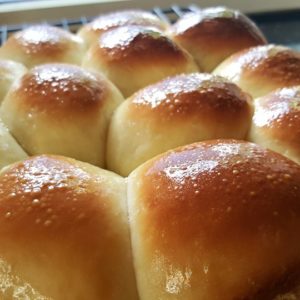
Asian soft bread buns
Ingredients
TangZhong or Starter
- 10 Tbsp Water at 30°C
- 2 Tbsp Bread Flour
Activator
- 85 ml Water
- 5 g active dry yeast
Wet Ingredients
- Activator of water and yeast as above
- 30 g egg reserve the remaining egg for egg washing at shaping stage
- 84 g Tangzhong or starter measured from starter made above
Dry Ingredients
- 210 g bread flour or high gluten flour
- 56 g biscuit/cake flour or low gluten flour or even corn flour if you like very soft
- 1/2 teaspoon salt
- 20 g sugar
- 20 g milk powder
Softener
- 22 g butter
Instructions
- For the activator, add yeast to water at room temperature, and set aside for 5 minutes.
- Cook the starter by adding flour to water, and then bring it to 65°C, set aside to cool to 7°C. Use this as a wet ingredient later.
- Add all the wet ingredients and the starter to the activator and mix well.
- Mix in all the dry ingredients, then bring the mixture together. If using a machine, keep the temperature low by using cool wet and dry ingredient.
- Knead for 6 minutes, ensuring the dough's temperature does not increase above 28°C. If you use your hands, you should not need any flour and your hands, the table and the bowl should all be clean.
- Mix in the butter and knead for another 2 minutes.
- Proof for 40 minutes at 28°C.
- Cut into bun size, either 30g each for small buns or 60g for normal commercial sized ones., proof for another 30 minutes.
- Shape and incorporate whatever fillings and toppings desired, and egg wash with reserved egg.
- Proof in a warmer environment at 38°C.
- Bake at 200°C for 12 minutes until the bottoms of the buns are 2/3 golden brown in color.
Thermomix Method
Starter
- Mix the bread flour and water in the Thermomix, and bring it to 65°C, refrigerate.
Mix Bread
- Combine wet ingredients, and add to the cooled starter in the Thermomix.
- Combine dry ingredients and add to Thermomix.
- Using knead function, knead at Speed 3 for 6 minutes.
- Add the butter and knead another 4 minutes.
- Rest dough at 28°C for 40 minutes.
- Shape and incorporate whatever fillings and toppings desired.
- Proof in a warmer environment at 38°C.
- Bake at 200°C for 12 minutes until the bottoms of the buns are 2/3 golden brown in color.
How I made it is in this video:
How the guru and author herself (Yvonne Chen) makes this bread is in this video. I have more or less documented everything she has said. Have fun baking!

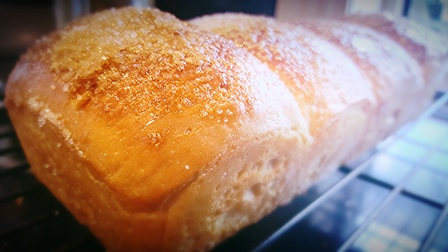

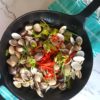
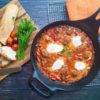
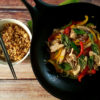
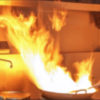
Hi Pamela,
I was researching about Yvonne Chen’s 65 degree thangzong bread making method when I stumbled over your blog. The bread I made risen beautifully thanks to you! And more importantly, it kept really well for 2 days despite not using any other chemical bread improver.
So, now I was wondering, if you would share with me where you got that precious book? I am located in Indonesia, as you might have guessed, nobody sells Chinese books here, but I will get my cousins to get it for me. They are in Malaysia and Singapore.
Again, thank you so much for your blog. And your bread recipe.
Best wishes,
Jun
Hey Jun,
The book is written in Chinese, I am not sure where you can get an English version. Do you want a Chinese version? I bought it from a website but I cannot find that site anymore.